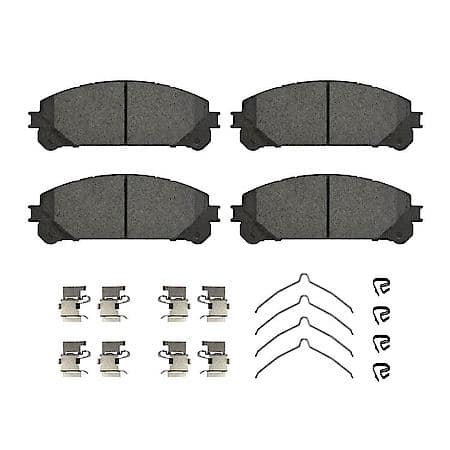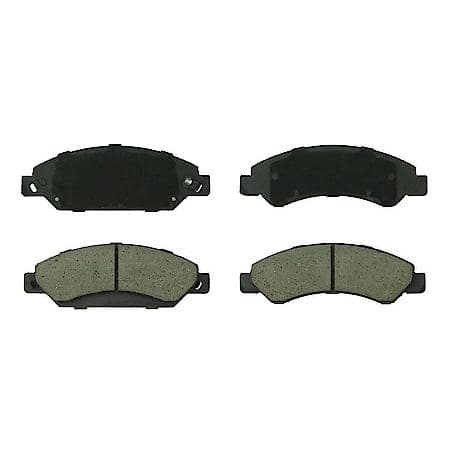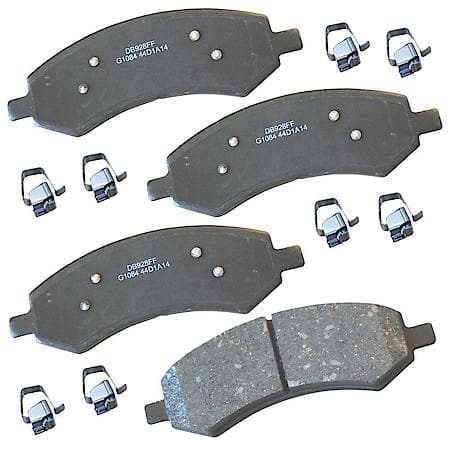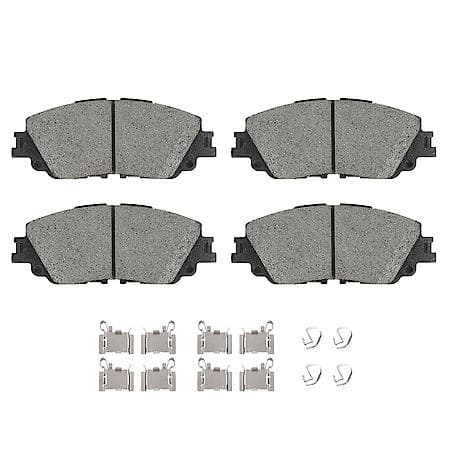- Shop All
- Replacement Parts
- Performance Parts
- Accessories
- Oil & Fluids
- Special Offers
- Speed Perks
- Advice & How-Tos
- Project Guides
Front Brake Pads and Shoes
Your brake system is one of the most important parts of your vehicle when it comes to safety on the road. Healthy brake pads are vital to ensuring that your brake system is able to slow your car and bring you to a safe stop.
Whether you're dealing with worn-out brake pads or just looking to upgrade for better performance, Advance Auto Parts has you covered. We offer a wide range of genuine OE parts, superior options from renowned and cost-effective brands like ACDelco, Akebono, Bosch, Carquest, Motorcraft, WBR, Power Stop, and more.
Shop online for the convenience of free shipping with next-day delivery, or pick up your parts today at an Advance Auto Parts store near you. Enhance your vehicle’s safety and performance with the right brake pads tailored to your needs
Same Day Home Delivery
Not Available For This Item
Home Delivery
Not available for this item
Same Day Home Delivery
Not Available For This Item
Home Delivery
Not available for this item
Same Day Home Delivery
Not Available For This Item
Home Delivery
Not available for this item
Same Day Home Delivery
Not Available For This Item
Home Delivery
Not available for this item
Same Day Home Delivery
Not Available For This Item
Home Delivery
Not available for this item
Same Day Home Delivery
Not Available For This Item
Home Delivery
Not available for this item
Carquest Professional Platinum Brake Pads: With Hardware, Ceramic, Better Performance, Quiet - Front
Same Day Home Delivery
Not Available For This Item
Home Delivery
Not available for this item
Same Day Home Delivery
Not Available For This Item
Home Delivery
Not available for this item
Same Day Home Delivery
Not Available For This Item
Home Delivery
Not available for this item
Same Day Home Delivery
Not Available For This Item
Home Delivery
Not available for this item
Same Day Home Delivery
Not Available For This Item
Home Delivery
Not available for this item
Same Day Home Delivery
Not Available For This Item
Home Delivery
Not available for this item
Same Day Home Delivery
Not Available For This Item
Home Delivery
Not available for this item
Same Day Home Delivery
Not Available For This Item
Home Delivery
Not available for this item
Same Day Home Delivery
Not Available For This Item
Home Delivery
Not available for this item
Same Day Home Delivery
Not Available For This Item
Home Delivery
Not available for this item
Same Day Home Delivery
Not Available For This Item
Home Delivery
Not available for this item
Carquest Professional Platinum Brake Pads: With Hardware, Ceramic, Better Performance, Quiet - Front
Same Day Home Delivery
Not Available For This Item
Home Delivery
Not available for this item
Front Brake Pads and Shoes for Replacement, Repair and More
Front Brake Pads and Shoes Prices, Brands & Ratings
How much does it cost to buy, replace or repair Front Brake Pads and Shoes?
What makes do you sell Front Brake Pads and Shoes for?
What are some of the best-rated brands for Front Brake Pads and Shoes?
Which brand offers premium Front Brake Pads and Shoes?
Which brand offers the lowest priced Front Brake Pads and Shoes?
Front brake pads and shoes are key components in your vehicle's braking system. Brake pads are used with disc brakes, creating friction against the brake rotors to slow the vehicle. Brake shoes, on the other hand, are used with drum brakes and press outward against a rotating drum to achieve the same effect.


















